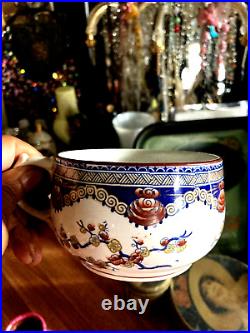

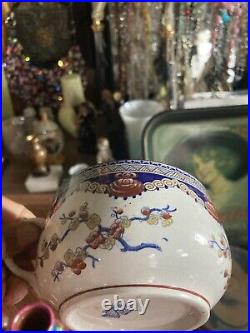
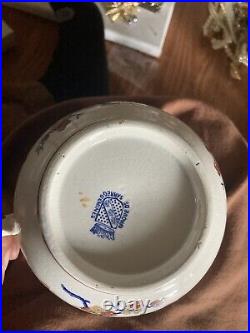
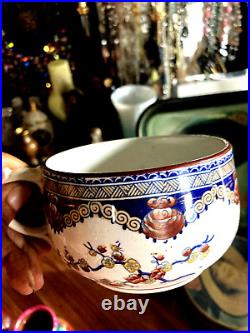
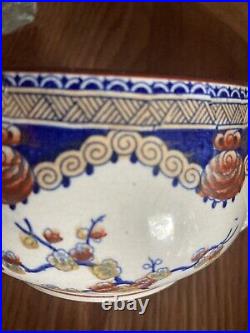
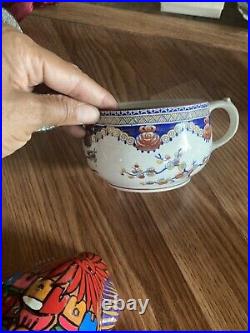
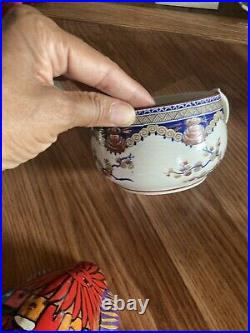

Sarreguemines, whose name is a French. Spelling of the name in local Lorraine-German. Dialect “Saargemin”, meaning “confluence into the Saar”, is located at the confluence of the Blies. 79 kilometres (49 mi) east of Metz. 107 kilometres (66 mi) northwest of Strasbourg. By rail, and at the junction of the lines to Trier. Has rail connections to Strasbourg, Saarbrücken and Metz. Traditionally Sarreguemines was the head of river navigation on the Saar, its importance being a depot where boats were unloaded. I searched on Google and found information about a mark. The mark was used from approximately 1850 to 1950 and features the Lorraine coat-of-arms under a mural crown with the words “OPAQUE DE SARREGUEMINES” (approximately 2 cm in size). Another mark was used from approximately 1875 until 1900 and features the Lorraine coat-of-arms under a mural crown with the addition of OPAQUE DE SARREGUEMINES. The first factory was established in 1790 by Nicolas-Henri Jacobi and two partners, even though the economic climate was unfavorable. In 1794, Jacobi acquired the molds and leftover materials from the facility in Ottweiler a. Saar, which had stopped producing porcelain around 1770 after being taken over by René François Jolly and Nikolas Leclerc in 1769. In 1800, the dynamic Bavarian Paul Utzschneider took over the factory and introduced new decorating techniques. Napoleon I became one of his best customers and ordered several pieces. The business quickly increased, and the firm had to open new workshops and acquire several mills. Due to protests and deforestation, the company began using coal instead of wood, but it wasn’t until 1830 that the first coal-fired kilns were built. After World War I, the factories were united under Sarreguemines – Digoin – Vitry-le-François and run by the Cazal family. During World War II, the faience factories were sequestered, and their management was entrusted to Villeroy & Boch between 1942 and 1945. After ceasing production of porcelain and majolica, the company was taken over in 1979 by the Lunéville – Badonviller – Saint Clément group. Note that the marks listed here need to be completed, and there are many more to be found online. Some sites claim that the mark showing the Lorraine coat of arms above “MADE IN GERMANY” was used until 1922, but this is incorrect because the area became French territory after World War I. The mark was used until 1922 but without the “MADE IN GERMANY” addition from 1918 onwards. I received three different mark tables with different date entries and explanations, which leads me to believe that the museum may be rewriting its own history every few years.

